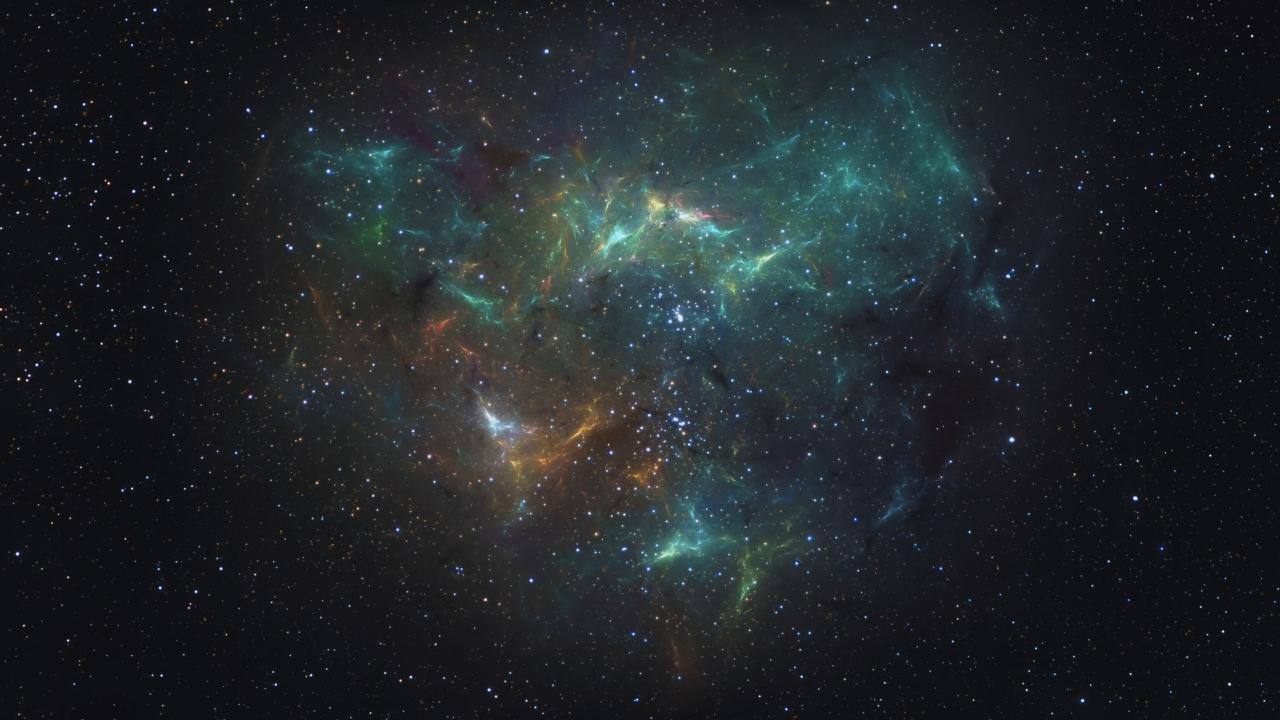
Join 10k+ people to get notified about new posts, news and tips.
Do not worry we don't spam!

Post by : Anis Farhan
The discovery of the third interstellar object in our solar system has reignited excitement in the scientific community and among the public alike. These rare visitors, traveling across unimaginable distances from outside our solar neighborhood, offer a chance to peek into the chemistry, physics, and history of distant star systems. Each one is like a messenger from beyond, carrying clues about how planetary systems evolve across the universe.
Until a few years ago, the idea of interstellar objects crossing paths with Earth’s solar system seemed more like science fiction than scientific fact. That changed with the historic discoveries of ʻOumuamua in 2017 and comet Borisov in 2019, both confirmed as interstellar in origin. Now, with a third object identified, astronomers are not only excited but also better equipped to investigate. Technology has improved, data collection is faster, and theories are more advanced. This means the third detection is not just a confirmation of possibility but a deeper exploration into what these objects mean for cosmic science.
Every interstellar object moves differently compared to comets and asteroids native to our solar system. They often have unusual speeds, angles of approach, or chemical signatures that set them apart. This latest object was detected using powerful sky surveys and orbital tracking systems, which flagged its high velocity as inconsistent with solar-bound bodies.
Initial observations showed that its trajectory was hyperbolic — meaning it was not bound to the Sun’s gravity and would continue traveling outward after a brief solar encounter. Astronomers could therefore conclude it came from outside the solar system. What makes this find even more remarkable is how early scientists identified it. Unlike ʻOumuamua, which was only spotted after it had already passed Earth, this object was seen earlier in its approach, allowing more time to study it.
Comparisons with the previous two interstellar objects were inevitable. ʻOumuamua, cigar-shaped and tumbling, sparked debates about whether it was a comet, asteroid, or even something artificial. Borisov, in contrast, behaved much like a typical comet, trailing gas and dust.
The third object, however, seems to blend characteristics of both. Early imaging suggests it carries icy materials, like Borisov, but its unusual shape and reflective properties echo the mystery of ʻOumuamua. Some researchers suspect it may have fragments breaking off, giving it a more complex structure. Others think its chemical makeup could reveal rare compounds not typically found in solar system comets.
What sets it apart most is the extended observation window scientists now have. The longer it can be tracked, the more data can be collected on its orbit, spin, and chemical composition. This helps refine models of how interstellar bodies travel across galactic space.
At first glance, one might wonder why the appearance of a distant space rock is significant. But interstellar objects are essentially natural probes, carrying information about distant corners of the galaxy. Unlike spacecraft, they are unplanned and uncontrolled, yet they can reveal how matter forms, evolves, and survives across different environments.
These objects may contain frozen gases, minerals, or organic compounds that predate our own solar system. By studying them, scientists can compare planetary system formation across galaxies. Imagine being able to touch a piece of another star system — that’s essentially what analyzing these visitors allows, even if only remotely through telescopes and spectroscopy.
Furthermore, interstellar objects test our planetary defense strategies. Their high speeds and unexpected arrival challenge detection systems, reminding us that preparedness is key. Understanding their movement helps improve tracking models, which in turn strengthens our ability to spot other potential cosmic threats.
The latest detection owes much to advancements in astronomical technology. Wide-field surveys like those conducted by the Pan-STARRS observatory in Hawaii, coupled with space-based instruments, now scan the skies with unprecedented precision. Artificial intelligence also plays a role, helping sift through enormous amounts of data to pick out anomalies in motion and brightness.
When the third object was spotted, multiple observatories worldwide quickly coordinated follow-up observations. This global scientific teamwork ensured continuous monitoring and rapid data collection, proving how international collaboration is essential in space science.
As with ʻOumuamua, the new interstellar object has sparked debates. Could it be a fragment from a planetesimal — an early building block of planets — ejected during the violent birth of a distant solar system? Or is it debris from a collision, drifting across light-years before reaching us?
Some more speculative theories even echo the discussions around ʻOumuamua, suggesting it could be an artifact of extraterrestrial technology. While most astronomers lean toward natural explanations, the curiosity remains. The fact that it differs in form from previously known solar system bodies keeps the mystery alive.
This discovery is more than just an observational milestone; it’s a preview of what lies ahead. With next-generation telescopes like the Vera C. Rubin Observatory soon to be fully operational, scientists expect many more interstellar objects will be detected in the coming decades. Instead of once-in-a-decade discoveries, they may become almost routine.
Such a shift opens new possibilities. Space agencies are already considering missions that could intercept future interstellar objects. A spacecraft designed to study these visitors up close could launch on standby, ready to chase the next one that passes through. The European Space Agency and NASA have both explored concepts for such “interstellar interceptors,” which could revolutionize our ability to study other star systems without leaving our own.
Ultimately, each interstellar object is like a page in the galactic storybook. By studying them, humanity learns not only about distant planets and stars but also about our own origins. The materials within them may be the same ones that seeded early Earth with the building blocks of life. In that sense, these cosmic travelers connect us to the larger universe, reminding us that our solar system is not an isolated bubble but part of a vast, dynamic galaxy.
The third object is a reminder of just how little we know and how much is still waiting to be discovered. For scientists, it represents both an exciting challenge and a humbling perspective. For the rest of us, it sparks imagination — a reminder that the cosmos is full of mysteries drifting silently through the stars.
This article is based on current scientific findings and ongoing astronomical research. As new data emerges, interpretations may evolve. The content is intended for general informational purposes and should not be considered as final scientific consensus.










Paramount+ to Stream PBR’s 'Unleash the Beast' in New Five-Year Deal
Paramount+ will stream PBR’s 'Unleash the Beast' across the U.S. starting this December under a five

Zohran Mamdani Clinches NYC Mayoral Seat as Victory Speech Blends Politics and Bollywood
Zohran Mamdani won New York City's mayoral race, becoming the city's first Muslim and South Asian ma

India Wins First Women’s World Cup 2025 Title
India lifts its maiden Women’s World Cup 2025 title! Harmanpreet Kaur’s team stuns South Africa in a

Manuel Frederick, 1972 Olympic Bronze Goalkeeper, Dies at 78
Manuel Frederick, a member of India’s 1972 Olympic bronze hockey team, has died in Bengaluru at 78 a

Muhammad Hamza Raja Wins IFBB Pro Card Puts Pakistan & UAE on Global Stage
Pakistani bodybuilder Muhammad Hamza Raja earns IFBB Pro Card in Czech Republic, showcasing Dubai’s

Shreyas Iyer’s Recovery Underway After Spleen Laceration in Sydney ODI
Shreyas Iyer is recovering after a spleen laceration sustained while taking a catch in the Sydney OD